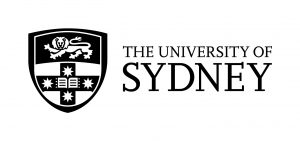Contributor VIAF URI: 56619800
Artist of print: S.1.01 Le portrait reconnu, S.1.02 Les amours de Glicere et d’Alexis, S.1.03 Le declin du jour, S.1.04 La dormeuse, S.1.05 Les plaisirs du printems S.1.06 La fête du Seigneur, S.1.07 Le ruisseau, S.1.08 La toilette, S.1.09 La fille obéissante, S.1.10 L’ombre d’eglé, S.1.11 Les jardins de Marly, S.1.12 La sérenade, S.1.13 L’heureuse nuit, S.1.14 La fille mal gardée, S.1.15 L’ingénuë, S.1.16 La soirée du village, S.1.17 Le droit de péage, S.1.18 L’amant guéri, S.1.19 L’effet de la peur, S.1.20 Le berger fidéle, S.1.21 La foire de gonésse, S.1.22 Le départ, S.1.23 Plus de peur que de mal, S.1.24 L’amant timide, S.1.25 Les quatre coins
Engraver of Print: S.1.01 Le portrait reconnu, S.1.02 Les amours de Glicere et d’Alexis, S.1.03 Le declin du jour, S.1.04 La dormeuse, S.1.05 Les plaisirs du printems S.1.06 La fête du Seigneur, S.1.07 Le ruisseau, S.1.08 La toilette, S.1.09 La fille obéissante, S.1.10 L’ombre d’eglé, S.1.11 Les jardins de Marly, S.1.12 La sérenade, S.1.13 L’heureuse nuit, S.1.14 La fille mal gardée, S.1.15 L’ingénuë, S.1.16 La soirée du village, S.1.17 Le droit de péage, S.1.18 L’amant guéri, S.1.19 L’effet de la peur, S.1.20 Le berger fidéle, S.1.21La foire de gonésse S.1.22 Le départ, S.1.23 Plus de peur que de mal, S.1.24 L’amant timide, S.1.25 Les quatre coins
Author of (Song 1):
Author of (Song 2):
Composer of (Song 1):
Composer of (Song 2):
Biography:
Jean-Michel Moreau was born the son of a perruquier (wig maker) on rue Bussy, Paris on 26 March 1741. His father’s respectable bourgeois profession placed him in a similar social rank to the artists and artisans who lived that same part of town. Jean-Michel is better known as Moreau le Jeune to distinguish him from his older brother Louis-Gabriel, who was also an artist (Moreau l’aine). For brothers Edmond and Jules de Goncourt, the nineteenth-century writers partly responsible for the revival of interest in the art and society of the previous century, Moreau le Jeune was the master vignettiste of his age. They celebrated him for his ability to capture moments from poetry, novels, and plays as elegant ‘vignette’ illustrations. Moreau le Jeune is perhaps best known, however, for his prints for the Le Monument du Costume (1789), a rare visual document of daily life, behaviour and fashion in late ancien-régime France.
Little is known of Jean-Michel Moreau’s early life, but by the age of seventeen he must have been both ambitious and accomplished, for he was made professor of drawing at the Imperial Academy of Painting and Sculpture in St Petersburg. Moreau had followed his painting master Louis-Joseph Le Lorrain (1715-59) to Russia when the latter was named director of that newly established academy. When Le Lorrain died eighteen months later in 1759, Moreau returned to Paris, and entered to the studio of Jacques-Philippe Le Bas (1707-83) to retrain as a printmaker.
In her published eulogy to her father, Moreau le Jeune’s daughter, Catherine-Françoise Vernet, claimed that her father was a self-made man. While it is true that he was not born into a family of artists, like his daughter’s husband, Carle Vernet, and her son, Horace Vernet (1789-63), Moreau’s time in the studio of Le Bas put him at the centre of the artistic life in Paris.
His work as a printmaker began with a commission from the antiquarian compte de Caylus (1692-1765), for whom he produced plates of Greek, Roman and Etruscan antiquities. In the years that followed, Moreau made etchings after works by the leading artists of the French Académie de peinture et de sculpture, including François Boucher, Jean-Honoré Fragonard, Jean-Baptiste Greuze and Claude Joseph Vernet. In 1765 he married Françoise-Nicole Pinaeau, daughter of Académie sculptor Domonique Pineau, whose mother was a member of the Prault family of royal printers. The personal and professional networks that Pineau developed in these years that would later enable Moreau to make an excellent match for his daughter, placing Moreau at the centre of the prestige print market, where he found his metier as a designer and etcher of book illustrations.
Moreau le Jeune illustrated some of the most celebrated books of the Enlightenment. He produced some plates for Diderot and d’Alembert’s Encyclopédie, and he produced illustrations for novels and plays by Jean-Jacques Rousseau and Voltaire. His catalogue of book illustrations is vast, numbering above two thousand illustrations for many great works of French literature, including new editions of Moliere, Corneille, Pascal, and many more besides.
He also made fine portrait engravings and designed complex multi-figure history scenes such as his Revue du Roi à la Plaine des Sablons (1769). The success of that piece may have caught the attention of Charles-Nicholas Cochin (1715-90) (Cochin fils), who recommended Moreau for the position of Dessinateur des menu-plaisirs du Roi upon his retirement in 1770. This role, responsible for designing ephemeral stages, decorations and prints documenting for royal fêtes and other events elevated the artist’s status, placing him within Court society.
No doubt it was his royal appointment that brought him to the attention of Jean-Benjamin de Laborde, who commissioned Moreau le Jeune to illustrate his ambitious publication, Choix des Chansons mises en musique… (1773) dedicated to the dauphine, Marie-Antoinette. Moreau did not complete the commission, producing only 27 prints in total (25 vignettes, the title page and dedication) dated to 1772 and 1773. The remaining 75 prints for the Choix de Chansons were designed by Joseph Barthélemy Lebouteux, and Jean Jacques François Lebarbier, and engraved by François Denis Née, Louis Joseph Masquelier, and Jacques Philippe Joseph de Saint-Quentin. Moreau is the only peintre-graveur [designer-engraver] associated with the project.
Adrien Moreau, biographer of Moreau le Jeune and his brother, provides a tantalising, though undocumented account of why the printmaker did not complete the commission:
“Malheureusement, le caractère du chansonnier et l’humeur de l’artiste ne purent sympathiser ; ils se séparèrent au premier volume, à la suite d’une scène violente…” [sadly, the character of the songsmith and the temperament of the artist were incompatible; they separated after the first volume following a violent scene].[1]
While the tale of a violent squabble between Moreau and Laborde makes for fascinating reading, it must also be noted that in 1773 the printmaker was in high demand. That year he was commissioned to illustrate an edition of the complete works of Molière, and the following year to illustrate the complete works of Rousseau. Moreau was on the ascendant, and perhaps it was those more lucrative projects that drew him away.
Moreau le Jeune’s illustrations perfectly captured the subtle nuances of style of the Paris Salon in the 1770s and 1780s that defy categorisation according to broad stylistic terms such as rococo or neoclassical. His work sits somewhere between the grace and frivolity of Fragonard, the sentimentality of Greuze, and the neo-classical sobriety of Vien. This delicate balance is perhaps best summarised in the words of his great champions, the Goncourts: “il cherche dans sa ligne une sorte de gracilité antique. On rencontre parfois dans ses allegories une académie d’homme qui vise à la statue grecque, et qui, sous l’esprit de ses doigts, devient un Apollon en biscuit de Sèvres.” [“he seeks in his line a form of ancient grace. We sometimes meet in his allegories a nude which aims at the Greek statue form, and which, under the spirit of his fingers, becomes an Apollo in biscuit de Sèvres.”][2]
Moreau le Jeune’s membership of the radical Masonic Loge des Neuf Soeurs places him firmly in the circle of Enlightenment artists and writers. That lodge was known for its ardent support of social reform, it counted among its members Jean-Baptiste Greuze, Claude-Joseph Vernet, his son, Carle Vernet, sculptor Antoine Houdon, and philosophe Jean le Rond d’Alembert. The Loge des Neufs Soeurs raised the ire of Louis XVI when the controversial philosophe Voltaire became a member in the last month of his life in April 1778. Moreau’s association with that loge does not appear to have impeded his progress at Court, however, as he was appointed Dessinateur et Graveur du Cabinet du Roi in 1781.
There is some evidence that Moreau was politically engaged. He served on the faculty of the Lycée of the Société d’Apollon (an offshoot of the Loge des Neufs Soeurs) an organisation that promoted public education. Accepted as a member of the Académie de peinture et de sculpture in 1789, on the eve of the Revolution, Moreau appears to have been sympathetic to the revolutionary cause, and he passed that bloody period unscathed. Along with Jacques-Louis David, he was one of the Académie members to work on the revision of statutes and rules for the academy for the new society. Having spent six months in Italy in 1785, Moreau was also among those artists to protest against the looting of Italy in 1796.
Moreau le Jeune all but stopped etching in 1790 but continued to work as a designer of prints. He became a member of the Commission temporaire des Beaux-Arts in 1791, just two years before the Académie Royale de peinture et de sculpture was abolished after the execution of Louis XVI. From 1797 until the end of his life Moreau was a professor at the Écoles centrales de la Ville (Paris). When Louis XVIII was restored to the throne in 1814 the aging Moreau was penniless. It was perhaps for this reason that his friends saw that his former title of Dessinateur du Cabinet du Roi was restored. He did not hold that position long as he died on 30 November 1814 at the age of seventy-three.
Moreau le Jeune’s posthumous reputation relies much on the admiration of the Goncourts, who placed his work of the 1770s and 1780s alongside the great works of the period, describing it in their characteristically poetic language as spirituelle. The 25 vignettes that he produced for Laborde’s Choix de Chansons are among the first series of illustrations that he produced as he came to the height of his powers.
Bibliography:
Arthur, Dorothy P, and David Smith, “Sur un collaborateur énigmatique de l’Encyclopédie : Jean-Michel Moreau dit le Jeune”, in Recherches sur Diderot et sur l’Encyclopédie, 2008, no°43, p.145-157.
A Court Reppington, C., “Moreau le Jeune”, The Academy (London) Vol. 72, Iss. 1830, (Jun 1, 1907): 534-6.
Cormack, M, ‘An Italian Sketchbook by Moreau le Jeune’, Apollo, 87 (1968), pp. 124–8.
Goncourt, Edmond et Jules Edmond et Jules, L’art du XVIIIème siècle ( Gravelot, Cochin, Eisen, Moreau, Debucourt, Fragonard, Prudhon, Watteau) Tome II (Paris; Rapilly, 1882). 182 to 267.
Heller-Greenman, Bernadine, “The “Monument du costume” of Jean -Michael Moreau le Jeune in the context of Rousseau and the Ancien Régime”, PhD diss (Florida State University, 2002).
Hind, A. M. ed.: Fragonard, Moreau le jeune and French Engravers, Etchers and Illustrators of the Late XVIII Century (London, 1913)
Mahérault, Marie-Joseph-François, L’œuvre gravé de Jean-Michel Moreau le jeune (1741–1814) : catalogue raisonné et descriptif avec notes iconographiques et bibliographiques, suivi d’un catalogue raisonné de gravures d’après Moreau et d’un supplément contenant un catalogue des dessins de Moreau (Paris: Adolf Labitte, 1880).
Mayor, A. Hyatt. “Le Monument Du Costume.” The Metropolitan Museum of Art Bulletin 28, no. 5 (1933): 87-88
Moreau, Adrien, Les Moreaus (Librairie de L’Art, 1893).
Vernet, Fanny. “Notice historique sur Jean-Michel Moreau, 20 octobre 1818.” Archives de l’art français.” 1 (1851): 183-190.
[1] Adrien Moreau, Les Moreaus (Librairie de L’Art, 1893). 59-60.
[2] Edmond et Jules Edmond et Jules Goncourt, L’art du XVIIIème siècle (Gravelot, Cochin, Eisen, Moreau, Debucourt, Fragonard, Prudhon, Watteau) Tome II (Paris; Rapilly, 1882), 191.
Roles (Getty AAT Term): artists (visual artists), engravers (printmakers)
Roles Getty AAT URI: 300025103 300025165
References to this Individual:
Notes:





